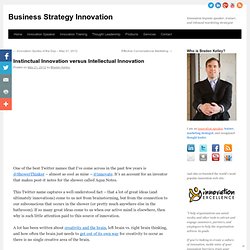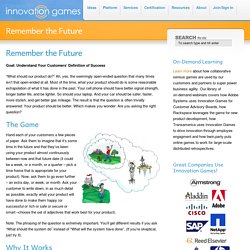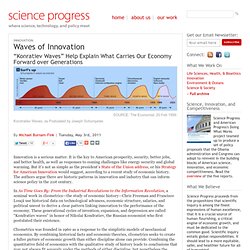

A Simple Tool You Need to Manage Innovation - Bansi Nagji and Geoff Tuff. By Bansi Nagji and Geoff Tuff | 5:22 PM May 31, 2012 Management knows it and so does Wall Street: The year-to-year viability of a company depends on its ability to innovate.

Yet many companies have not yet learned to manage innovation strategically. The companies we’ve found to have the strongest innovation track records do things differently: Rather than hoping that their future will emerge from a collection of ad hoc, stand-alone efforts that compete with one another for time, money, attention, and prestige, they manage for “total innovation.” One tool we’ve developed to help companies manage their innovation portfolio is the Innovation Ambition Matrix (see the chart below). It is a refinement of a classic diagram devised by the mathematician H. Instinctual Innovation versus Intellectual Innovation. One of the best Twitter names that I’ve come across in the past few years is @ShowerThinker – almost as cool as mine – @innovate.

It’s an account for an inventor that makes post-it notes for the shower called Aqua Notes. This Twitter name captures a well-understood fact – that a lot of great ideas (and ultimately innovations) come to us not from brainstorming, but from the connection to our subconscious that occurs in the shower (or pretty much anywhere else in the bathroom). If so many great ideas come to us when our active mind is elsewhere, then why is such little attention paid to this source of innovation.
A lot has been written about creativity and the brain, left brain vs. right brain thinking, and how often the brain just needs to get out of its own way for creativity to occur as there is no single creative area of the brain. Intellectual Innovation begins with active efforts to capture and develop ideas using techniques such as brainstorming, greenhousing, etc. What do you think?
Remember the Future - Innovation Games. Goal: Understand Your Customers’ Definition of Success “What should our product do?”

Ah, yes, the seemingly open-ended question that many times isn’t that open-ended at all. Most of the time, what your product should do is some reasonable extrapolation of what it has done in the past. Your cell phone should have better signal strength, longer batter life, and be lighter. So should your laptop. Hand each of your customers a few pieces of paper. Note: The phrasing of the question is extremely important. This game is based on numerous studies in cognitive psychology that have examined how we think about the future. This approach has other important benefits. Quova: Innovation Games for Sales Training.
Diffusion of innovations. The diffusion of innovations according to Rogers.

With successive groups of consumers adopting the new technology (shown in blue), its market share (yellow) will eventually reach the saturation level. In mathematics, the yellow curve is known as the logistic function. The curve is broken into sections of adopters. History[edit] The concept of diffusion was first studied by the French sociologist Gabriel Tarde in late 19th century[3] and by German and Austrian anthropologists such as Friedrich Ratzel and Leo Frobenius.[4] The study of diffusion of innovations took off in the subfield of rural sociology in the midwestern United States in the 1920s and 1930s.
In 1962 Everett Rogers, a professor of rural sociology, published his seminal work: Diffusion of Innovations. Elements[edit] Growth: The great stagnation. Waves of Innovation. SOURCE: The Economist, 20 Feb 1999.Kondratiev Waves, as Postulated by Joseph Schumpeter.

Innovation is a serious matter. It is the key to American prosperity, security, better jobs, and better health, as well as responses to coming challenges like energy security and global warming. But it’s not as simple as the president’s State of the Union address, or his Strategy for American Innovation would suggest, according to a recent study of economic history. The authors argue there are historic patterns in innovation and industry that can inform science policy in the 21st century.
In As Time Goes By: From the Industrial Revolutions to the Information Revolution, a seminal work in cliometrics—the study of economic history—Chris Freeman and Francisco Louçã use historical data on technological advances, economic structure, salaries, and political unrest to derive a clear pattern linking innovation to the performance of the economy. Let’s use the familiar example of steam power.